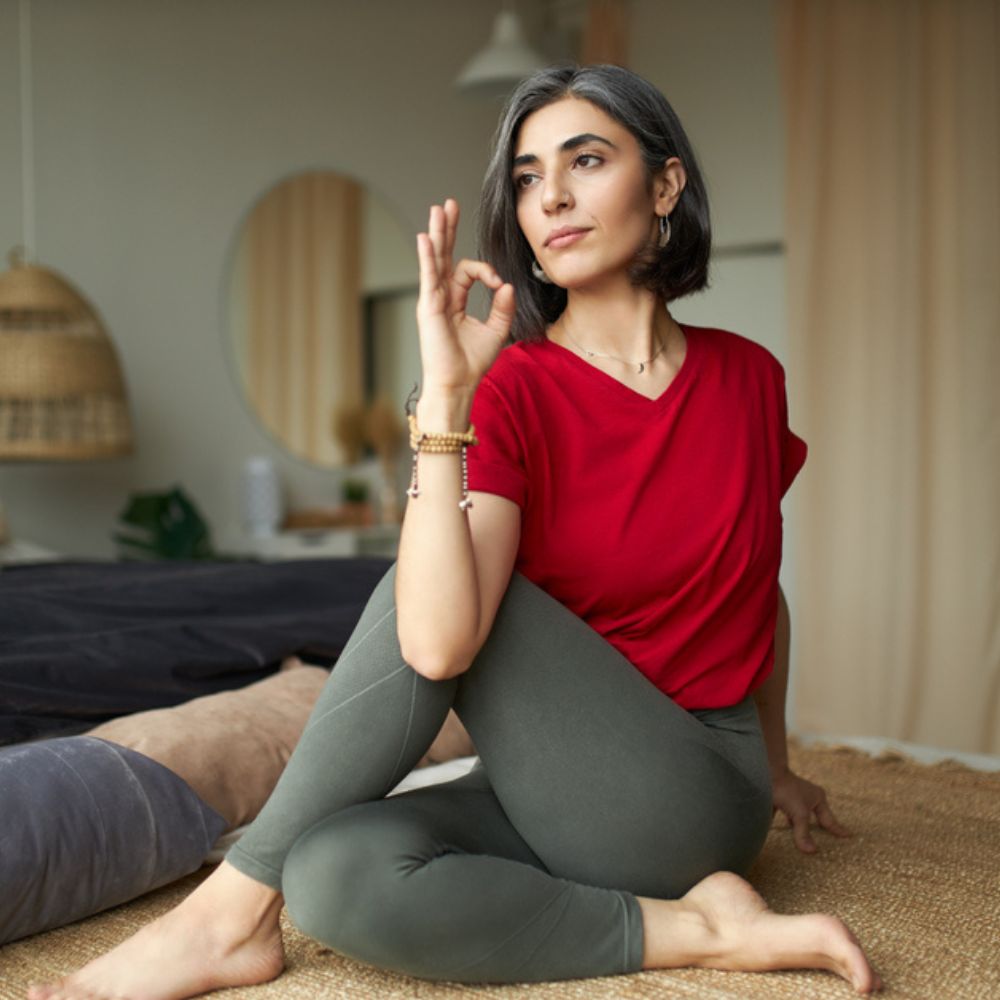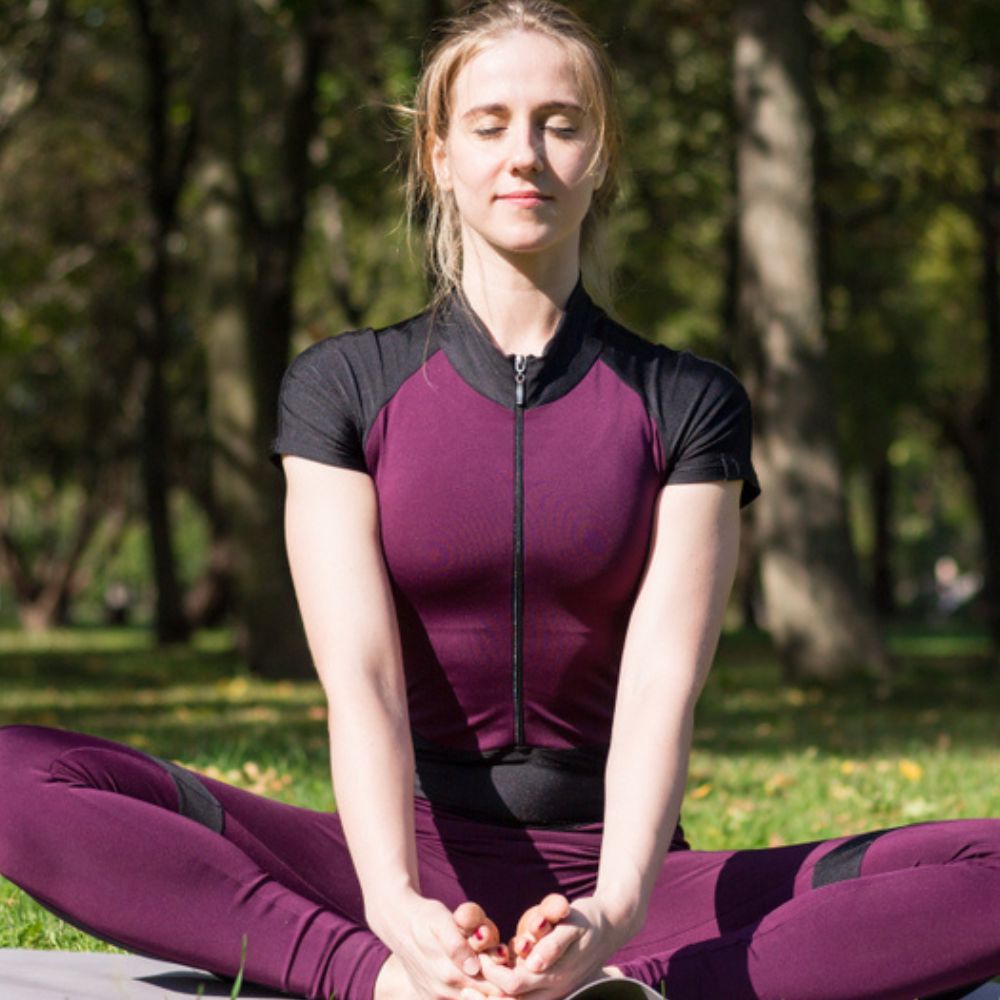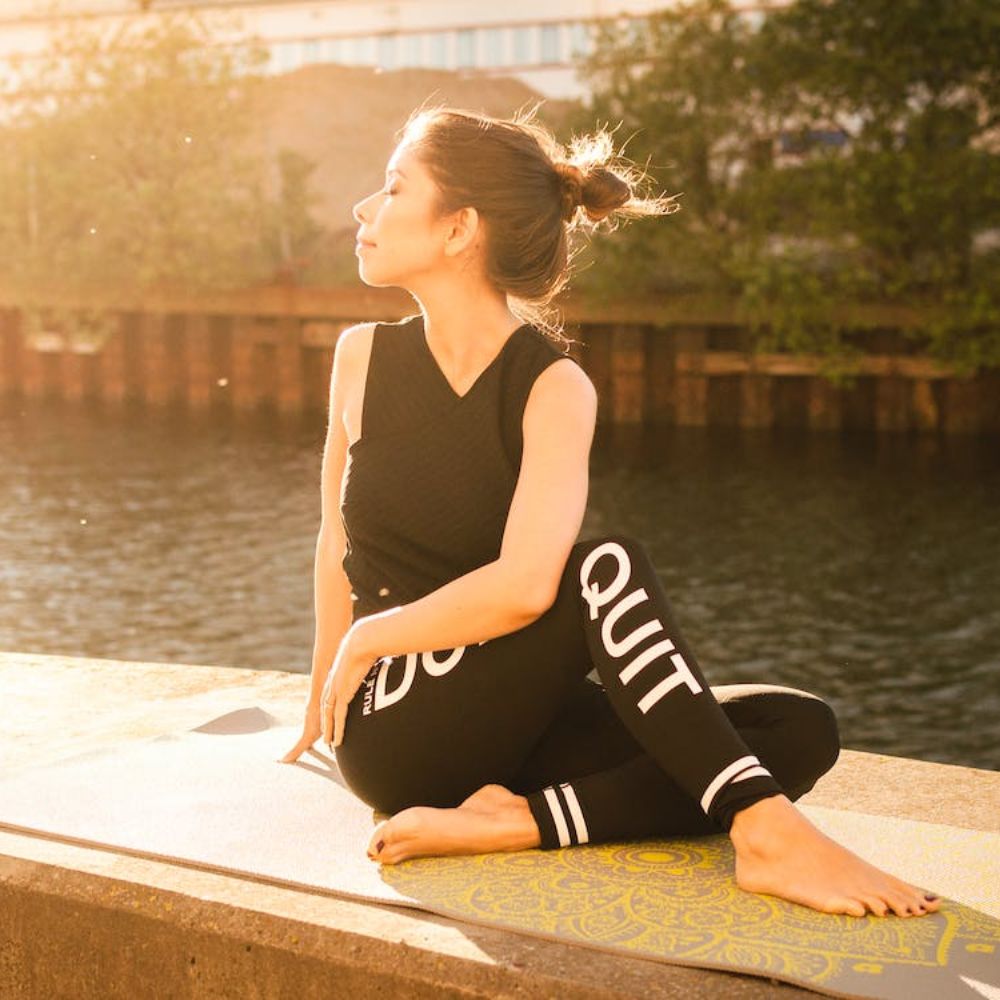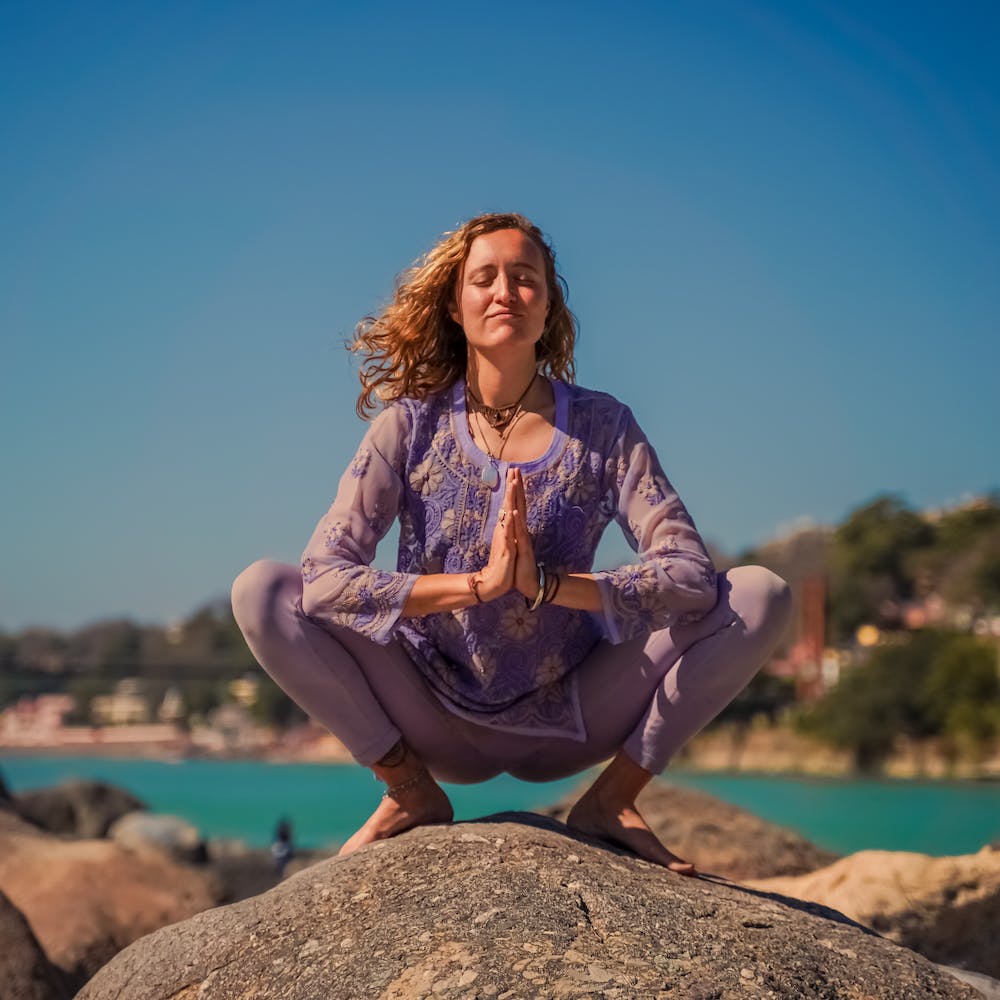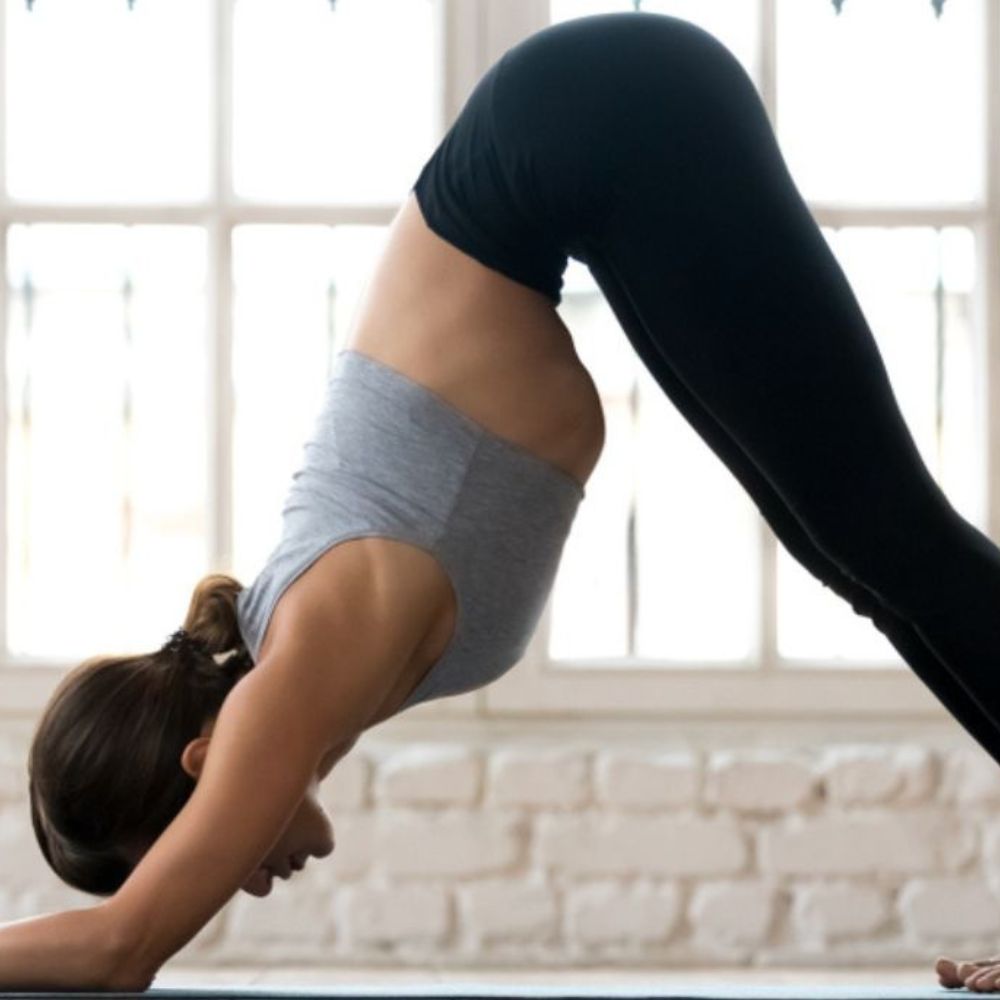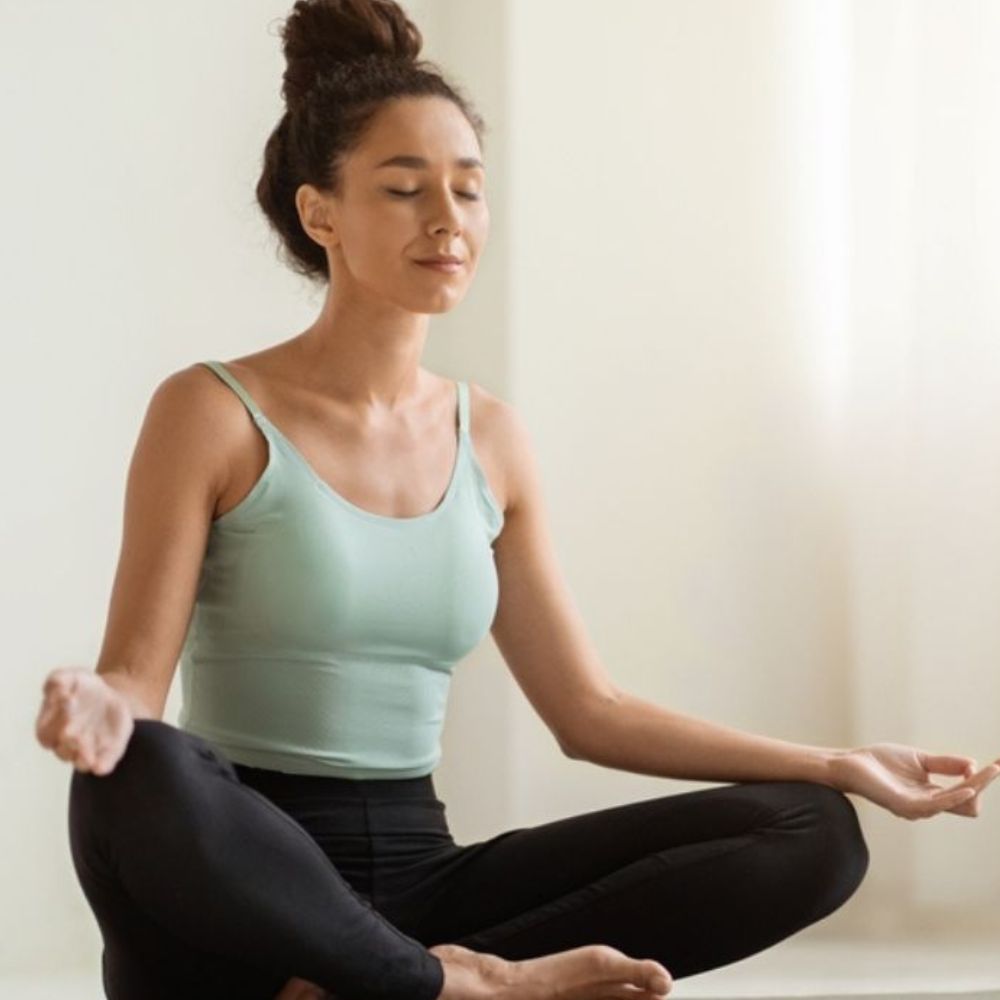Eagle Pose: Benefits And Steps to Do Garudasana
Eagle pose, also known as Garudasana, is one of the best yoga poses to improve balance. Read all about the amazing health benefits of this yoga asana here.
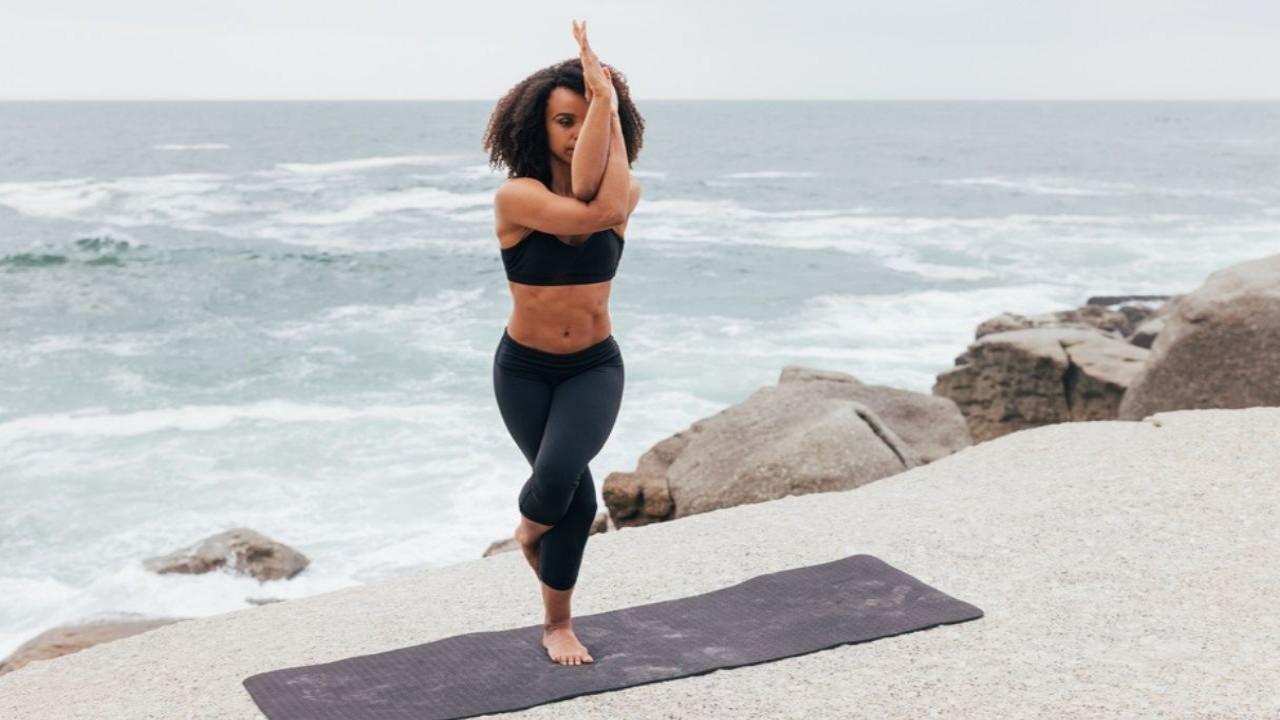
A standing asana that targets the whole body, the Eagle pose or Garudasana is a standing posture from yogic books. As suggested through its Sanskrit derivation, the pose shows resonance with a mythical bird. The posture involves bending, twisting, and tugging, making the case for a highly balanced and aligned stance.
Our contributor Bayu Prihandito, a certified Life Coach, and Yoga Teacher, says, “Beyond strengthening your leg muscles, Eagle pose is great for concentration, improving your balance, and opening up the shoulder joints. It also assists in loosening the hips and establishing a sense of bodily and mental balance.”
To reach the pinnacle of this pose and reap its multifold benefits, one needs to gear towards preparatory asanas, besiege the discomfort, and trust the process of practice through consistency, stability, focus, and bodily awareness. Before hopping on to the advantages of practicing this pose, let’s stroll through its step-by-step guide.
How to Do Eagle Pose?
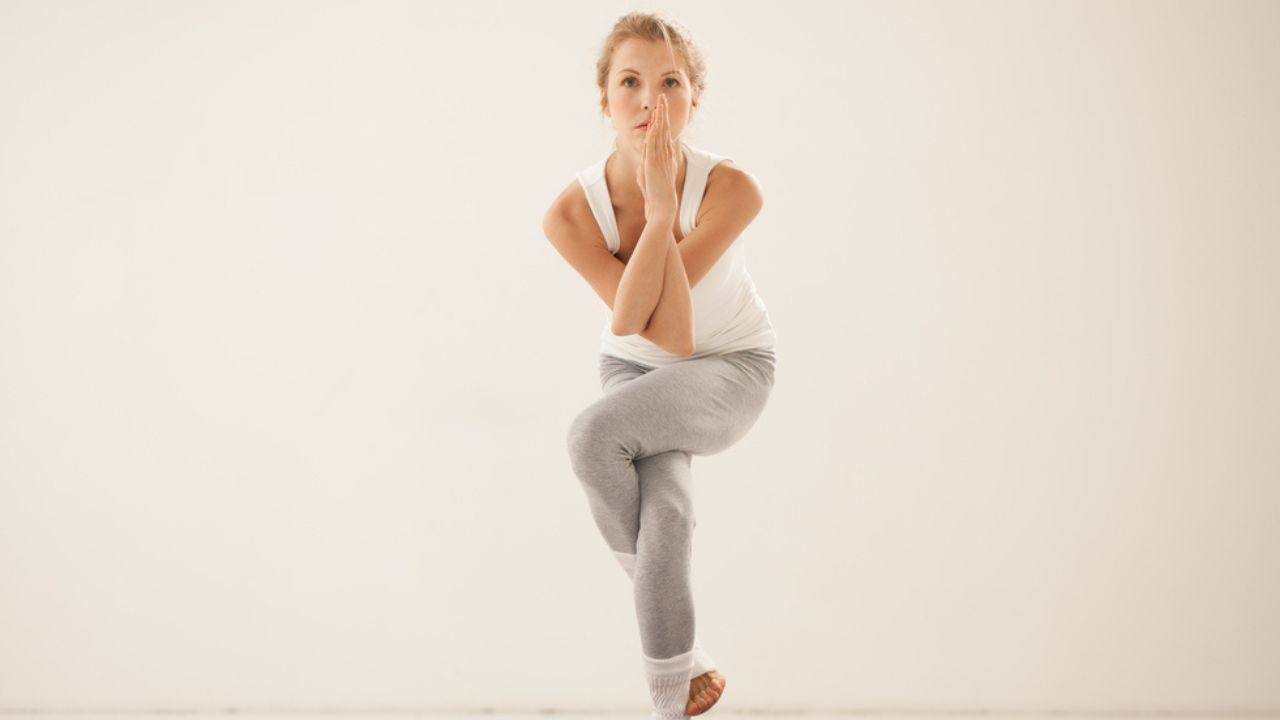
Step 1: There are two prevalent methods of beginning the eagle pose. You can either initiate with the mountain pose (tadasana), keeping your feet slightly apart and parallel, while softly bending the knees. Another way is to do it by being in the chair pose (Utkatasana) with a seated, knee-bent posture. While holding the pose, make sure that you don’t put unnecessary strain on either knee.
Step 2: Once you have decided about the launching method, begin by spreading your arms and in a swing bring them into an intersection by wrapping the left arm over the right. As your elbows and forearms are crossed, join the palms together maintaining the shoulders level for elbows.
Step 3: For the lower body, firmly ground your feet and press the pelvis down while ensuring that the thighs are rotated inwards, keeping a softer groin.
Step 4: Curl the tailbone forward, and tip-toe on your right foot by putting all the weight on the left foot. Lift the right leg and wrap the thigh over the left leg, with the knee facing forward.
Step 5: You need to curl and snug the right foot, tightly behind the left calf.
Step 6: Maintain the steadiness and balance of the pose, and try to stay there for five breaths. After unlocking the asana, you can repeat it for the other side.
Beginners Tips And Variations for Eagle Pose
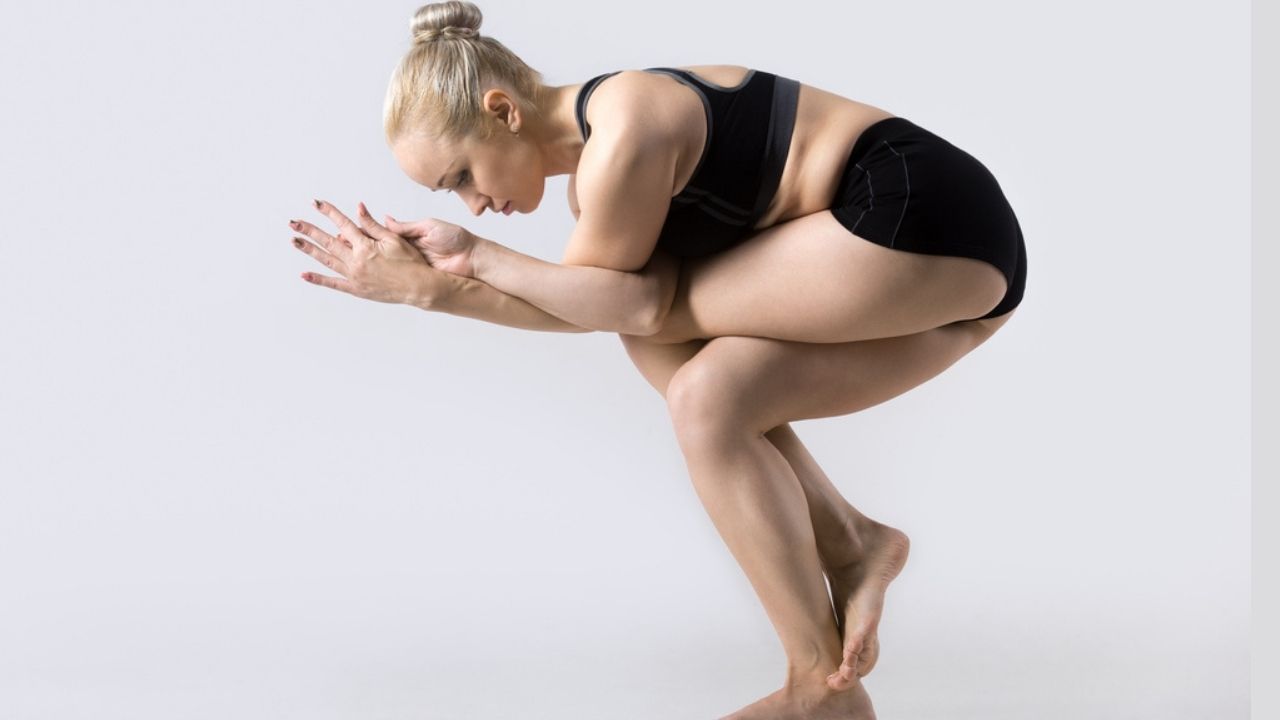
- As a beginner, it may be quite tricky to hook or tuck the raised-leg foot behind the standing leg shin. To ease this, you can cross the leg and instead of clasping the foot, you can place a block and land the toe of your crossed leg over it, while maintaining the balance.
- Similarly, if wrapping the arms and joining the palms feels uncomfortable and hinders the pose balance, you can move on to hold the opposite shoulders, by placing your palms in that manner.
- Hack for better wrapping and tucking: Lift your intended knee as up and high as possible, towards the chest, and then head on to wrap it in a swinging motion.
- Ensure that your back is not rounded and kept straight throughout the pose.
- An advanced and challenging variation of the eagle pose is bending forward. Once you accomplish the Garudasana, bend forward. You can either keep your arms out like a bird’s wings or rest the forearms on top of your thighs.
Benefits of Practicing Eagle Pose
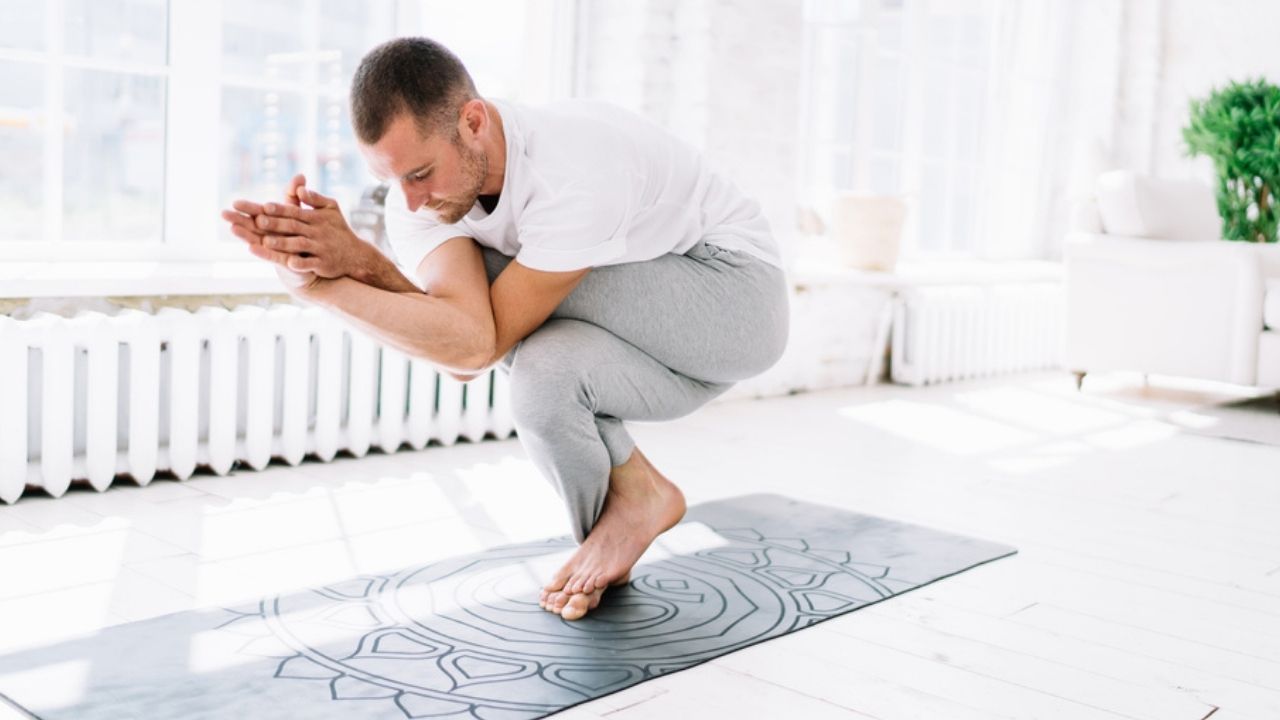
1. Body Detoxification: To get rid of toxins from the body, generally a residue of undigested food, there are a variety of detoxifying agents. Practicing this standing position also imparts such benefits. The twisting and molding of the body helps in squeezing and massaging the internal organs, flushing out your kidneys, and promoting better blood circulation to the reproductive system (1).
2. Strengthens the Leg Muscles: The Eagle Asana is all about engaging your lower body. The wrapping and tucking of the legs strengthen and stretch the muscles, making them more flexible. In this pose, the knee joints are also flexed, loosening them. It also provides strength and agility to the feet, calf muscles, ankles, and thighs (1).
Stating the reason behind the strength giving quality of this pose, our contributor Bayu Prihandito says, “Eagle pose requires both balance and muscular engagement, specifically in your thighs, calves, and ankles. By bending the knees and wrapping one leg around the other, it applies direct tension to the muscles, making them stronger over time.”
3. Improves Balance And Coordination: As your elbows and hips are in flexion, the engaged muscles are contracted. This efficiently allows for enhanced balance, coordination, and flexibility in your body. With correct form and consistence practice, you can also feel a sense of self-control and elegance (1).
4. Removes Stiffness And Pain: A lot of areas and muscles in the body, including the shoulders are intensely stretched through the twisting eagle pose. This opens the joints and loosens them to remove stiffness and relieve pain (1).
5. Good for the Back: The cervical spine, thoracic spine, and Lumbar spine are all extended and well-stretched in this pose. Therefore this pose is considered good for your back, as it strengthens and aligns it (1).
Safety And Precaution While Performing Eagle Pose
Even though there are no severe setbacks or limitations to the Eagle pose, it is always recommended to consult a professional and practice yogic postures under guidance. Here are certain situations when performing Garudasana can be avoided.
- Anyone suffering from any kind of elbow, knee, or ankle knee injury should skip this yoga practice pose, as it involves intense twisting and wrapping. There is pressure on the joints which can aggravate the injury.
- Since the pressure is also put on the veins, it is advised to avoid the eagle pose for those who have varicose veins, to prevent complications.
- Lastly, if you suffer from arthritic pain, then this pose series garudasana is not for you for it can worsen the pain (1).
Conclusion:-
Yoga asanas not only help keep us calm but also improve our flexibility and posture. Eagle pose, also known as Garudasana, is an amazing standing pose that helps improve focus, and body balance, relieves stress, and improves blood circulation. When practiced regularly, it can offer a myriad of health benefits. But before including it in your fitness regime, take advice from a yoga practitioner and avoid doing the pose if you have any injuries or severe arthritis.
Contributor: Bayu Prihandito, Certified Psychology Consultant, Life Coach, and RYT 200 Yoga Teacher, Founder - Lifearchitekture





 JOIN OUR WHATSAPP CHANNEL
JOIN OUR WHATSAPP CHANNEL






















































































